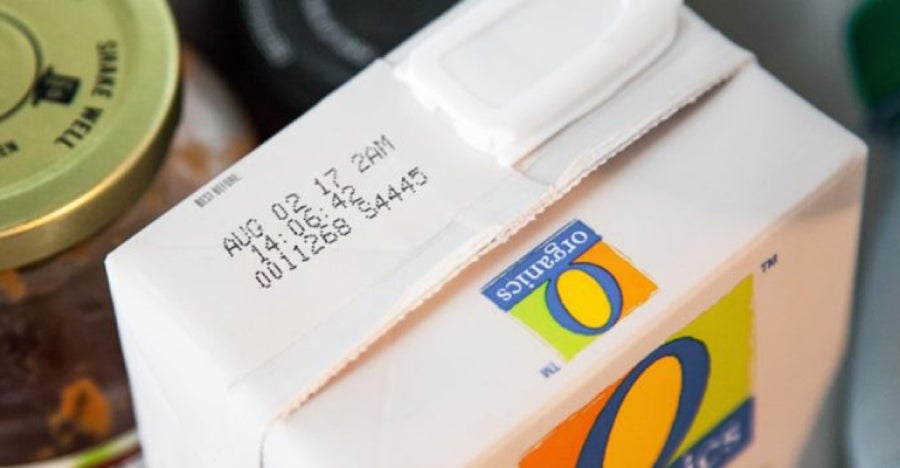Cost savings and sustainability are two hot topics that can sometimes seem at odds. But when it comes to food waste in restaurants, less food wasted means less money lost. Reducing your restaurant’s food waste also earns you sustainability bona fides by reducing your environmental impact.
Knowing the latest restaurant food waste statistics can help you understand the best ways to optimize your food waste management, learn what others are doing, save money, improve sustainability, and ultimately win over customers. Check out these 24 food waste restaurant industry statistics updated for 2025.
Key takeaways
- Customers support food waste reduction: An overwhelming number (91%) of consumers prefer to purchase from businesses that reduce food waste.
- Reducing food waste from restaurants is profitable: Each $1 in saved food creates $14 in additional revenue.
- Tech can help: Nearly half of restaurants (42%) use inventory management software to reduce waste.
Overall food waste statistics
1. Global food waste costs $1T annually
The global economy loses around $1 trillion to food waste annually, according to the United Nations Framework Convention on Climate Change (UNFCCC). What I find most surprising is that $1 trillion doesn’t just account for the food itself but the wasted land, water, energy, and serious economic effects that come with it. Think about all that time spent growing, harvesting, slaughtering, transporting, and selling efforts lost in the garbage.
2. The US discards 60M tons of food, more than any other country
The US is the worst offender when it comes to food waste, discarding nearly 60 million tons annually out of a global 2.5 billion tons, says waste-management tech provider RTS. Let’s do some quick and rudimentary math.
Say the average meal weighs 1.2 pounds of proteins, grains, and vegetables. That 60 million tons would create 100 billion meals, enough to feed the American population one full meal a day for almost 300 days.
3. 40% of food in the US goes uneaten
Remember that 60 million tons from the second food waste statistic? Turns out, 30% of it (or 24.2 million tons) ends up in landfills. 23% is never harvested, and only 19% of it is composted, according to insights from ReFED’s food waste monitor. Looking at the whole picture, the data shows that most of the food wasted is produced from residential sources.
4. US food surpluses generate over $300B
ReFED also estimates that $382 billion in surplus food was generated in 2023 (the latest data available at the time of this writing). To put that into perspective, $382 billion could fund over 2 million budget restaurants and over 500,000 high-end restaurants.
5. The restaurant industry spends over $160B on waste
According to food industry waste statistics from RTS, restaurants spend around $162 billion yearly on waste-related costs. Not just the food itself, but also the packaging. That’s despite efforts to invest in more eco-friendly packaging.
Also read: 50 Key Restaurant Industry Statistics
What causes food waste in restaurants
Most food waste at restaurants comes from three main sources: ordering, food prep, and customer consumption.
Ordering impacts food waste if too much of an ingredient or the wrong ingredient is ordered. If you don’t check every order as it’s delivered, you may also end up with products close to expiring, leading to additional waste.
Kitchen food prep impacts food waste. If ingredients aren’t prepared before they spoil, or if too much food is prepared, it spoils and is unsold.
Customer consumption can impact food waste if customers don’t clean their plates. If you see a lot of food getting discarded in your dining room, check your portion sizes, food quality, or number of garnishes.
6. Prep is a top contributor to restaurant food waste
As far as restaurant food waste statistics go, it mainly happens in three key areas: kitchen food prep, food service, and customer consumption, according to a study published in the National Library of Medicine. Restaurants should develop strategies for mitigating waste in each area to create a comprehensive food waste plan.
7. Foodservice accounts for 20% of food waste
Of that, full-service restaurants wasted the most (5.76 million tons), followed by limited-service restaurants (2.45 million tons) and lodging establishments (1.19 million tons), says the ReFED data from 2023. Comparing sources, that 20% in 2023 is down from 2022. Restaurants were responsible for 28% of food waste in 2022, according to the UN Environment Programme.
8. Food waste produces more greenhouse gas emissions than aviation
The UNFCCC reports that food loss and waste account for 8-10% of global greenhouse gas emissions. It’s an issue that’s rapidly exacerbating biodiversity losses, using up to a third of the world’s agricultural land. The group is using this food waste statistic to further illustrate how climate initiatives and efforts must span the entire supply chain.
9.15% of food produced is lost during harvest or slaughter
Of the food wasted around the world, 15% is lost during the harvest or slaughter process. Overall, food waste mostly happens at the production, post-harvest, distribution, and processing stages.
Figures from the United Nations Environment Programme (UNEP), the Food and Agriculture Organization (FAO), the World Wildlife Fund (WWF), and the Capgemini Research Institute reinforce that, saying almost half (48%) of food loss happens during agricultural production and the post-harvest handling process.
Also read: Restaurant Forecasting: Expert Advice for Success
Statistics on consumers & food waste
10. Customers spend $261 billion on food they won’t eat
If consumers became wise to just how much food they were leaving behind, they might be less motivated to eat out altogether. The food consumers don’t eat represents nearly 14% of their annual food-at-home spending and 7% of food-away-from-home spending, according to ReFED’s From Surplus to Solutions report.
11. 69% of consumers are concerned about their waste habits
In the last update to this article, we reported that 72% of consumers in 2022 were more aware of their food waste habits, according to a Capgemini report. As of 2023 (the latest data available), that trend persists, with 69% of consumers in that year’s Capgemini report voicing concern.
Almost three-quarters (71%) recognize the effects of food waste on the environment, and 73% believe individual choices can help lessen the impact. Over half (67%) are looking for more educational campaigns and awareness programs on the issue.
Pro tip: Walk the walk. If you’re going to make the effort to tell your customers you’re doing your part to reduce food and packaging waste, make sure your kitchen management, staff, and even customers are trained and encouraged to follow through.
12. As of 2023, consumers are largely unaware of the total costs of waste
The 2023 Capgemini report revisited consumer awareness levels of the total cost and effects of waste. In 2020, 61% of consumers didn’t know that a pair of jeans has a 7,000-liter water footprint. In 2023, 57% were unaware.
Only 70% in 2023 knew that a bar of chocolate has a 1,000-liter water footprint, down from 78% in 2020. And less than half knew that annual milk consumption produces the same CO2 emissions as driving 708 miles.
13. Online searches about food waste have increased by 80%
As consumers become more aware of their own food waste, they’re also looking for ways to prevent it. In 2022, for example, there was an 80% increase in online searches around ways to increase the shelf life of food at home, according to a 2022 Capgemini report.
Most consumers plan their food consumption and use a shopping list to reduce waste. A growing number of consumers are buying imperfect produce at lower price points.
14. 61% of consumers feel businesses should do more to reduce waste
Businesses aren’t off the hook. In fact, consumers expect them to join in on their own food waste initiatives. More than 60% of consumers in the 2022 Capgemini report believe brands, stores, and supermarkets should do more to reduce food waste. Nearly the same amount (57%) are disappointed because they think these businesses aren’t doing or caring enough about the issue.
15. 56% of social media conversations about food waste are negative
When it comes to social media, consumers are speaking out — and they’re not happy. More than half of social media conversations about food waste carry a negative sentiment, according to the 2022 Capgemini report. They’re not happy with businesses’ overall response to this issue. A food waste program is a great way to position yourself as a favorable option for local customers.
16. Only 33% of consumers are happy with labeling standards
Despite what businesses may think, the public’s general consensus is that businesses aren’t doing enough to combat food waste collectively. They want organizations to improve product innovation, packaging, date label clarity, and consumer education. In fact, only one-third of shoppers in the 2022 Capgemini report are satisfied with businesses’ current labeling practices.
One way to make customers happy is to implement digital labels using technology like QR codes. This way, customers can look up additional information about the product and make an informed purchase decision that reduces waste.

17. 91% of consumers prefer to purchase from businesses that reduce food waste
While reducing food waste is a great way to cut costs, it’s also a marketing and positioning tool. Consumers want to see businesses take action against food loss. In fact, more than 90% of consumers in the 2022 Capgemini report prefer to purchase from businesses with some sort of food waste management initiative. And 58% of these consumers have even increased spending with those businesses.
Stats on preventing food waste
The best way to minimize food waste in a restaurant is to prevent it in the first place by streamlining your ingredient orders and kitchen prep, and consistently checking the quality control and consumer reaction to your food. For the waste you can’t proactively prevent, look for ways to reuse ingredients or prepared foods before they spoil (daily specials or staff meals are good for this).
Otherwise, education seems to be a driving force for change by consumers, with 56% of consumers in the 2023 Capgemini report saying they’d switch to sustainable products if they received comprehensive information about their environmental impact.
18. Food waste reduction sees a 1,300% ROI
If you’re trying to wrap your head around how to reduce food waste in restaurants, you might first understand its value. Investing in food waste reduction initiatives pays off for businesses. For every $1 a company dedicates to combating food waste, it can anticipate a substantial $14 return on investment (ROI), according to ReFED’s 2023 impact report.
This 1,300% increase underscores the financial viability of implementing effective food waste management strategies, making it a smart and lucrative choice for businesses looking to enhance sustainability practices while bolstering the bottom line.
19. 75% of the food wasted is edible
Over the years (as far back as 2017), sources have suggested that two-thirds and up to 75% of food wasted is edible. You can’t control what diners do when they leave your establishment. But the point reinforces the need for owners and chefs to stay vigilant and organized when it comes to prep, storage, and portion control.
20. Private companies have invested $11 billion in food waste solutions
Between commercial projects, corporate financing, private equity, and venture capital, there has been a significant investment in food waste solutions over the last 13 years. That investment peaked in 2021 with $1.87 billion invested. Investments in 2025 have reached $11.2 million so far.
21. Reduction in costs is the top benefit of food waste-related initiatives for 56% of businesses
More than half (56%) of businesses engaged in food waste initiatives say cost reduction is the primary benefit, according to the 2022 Capgemini report. Beyond the positive environmental impact, businesses are motivated by the tangible economic advantages of effective food waste management.
22. 28% of food businesses focus on reducing household food waste
While many organizations concentrate on internal operations, only 28% of food manufacturing and retail organizations specifically target reducing household food waste, says the 2022 Capgemini report. This highlights the need for broader initiatives encompassing the entire supply chain, from production to consumer use. Collaborative efforts involving suppliers and consumers are essential for achieving comprehensive food waste reduction.
23. 42% of restaurants use inventory tech to reduce waste
In a survey by point-of-sale (POS) brand Lightspeed, 51% of respondents say they use inventory tools to reduce food cost and waste. The second most common way businesses are dealing with inflation is by implementing tighter food costing and inventory practices to prevent overspending on excess products while also reducing food waste costs.
24. 47% of hospitality owners think environmentally friendly initiatives will attract more customers
Lightspeed’s report also found that nearly half (47%) of hospitality owners agree or strongly agree that implementing environmentally friendly initiatives attracts more customers. This highlights a shifting consumer preference toward businesses that prioritize sustainability. For restaurants and food waste, adopting environmentally friendly practices is an ethical and strategic choice.
Also read: 25 Restaurant Trends in 2025
Frequently asked questions (FAQs)
The last bite
The restaurant food waste statistics for 2024 underscore the importance of understanding food waste, what causes it, and how to prevent it. Food waste is more than just a business problem—it’s a social problem. And as consumers demand businesses to be more socially responsible, understanding food waste is a great focus area for restaurants and food-related businesses.



